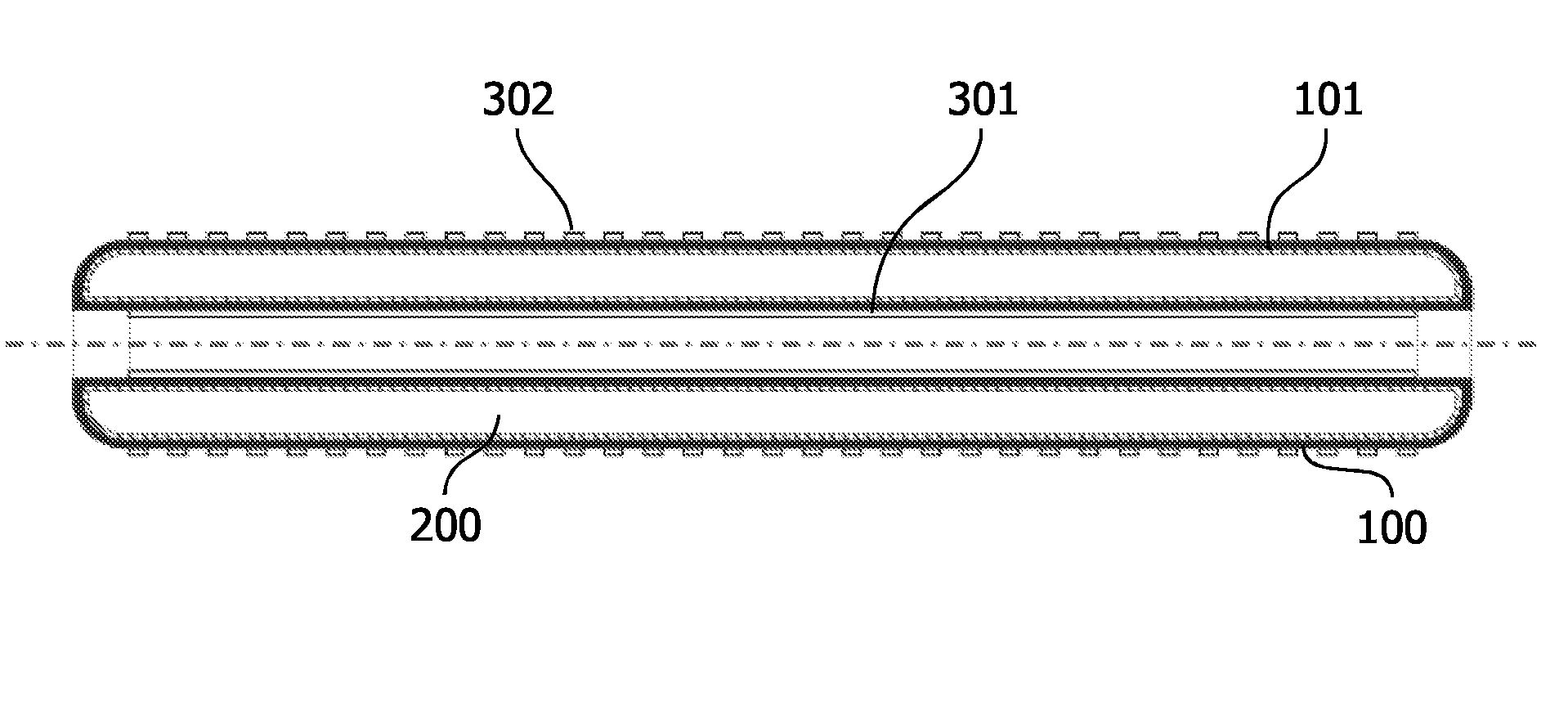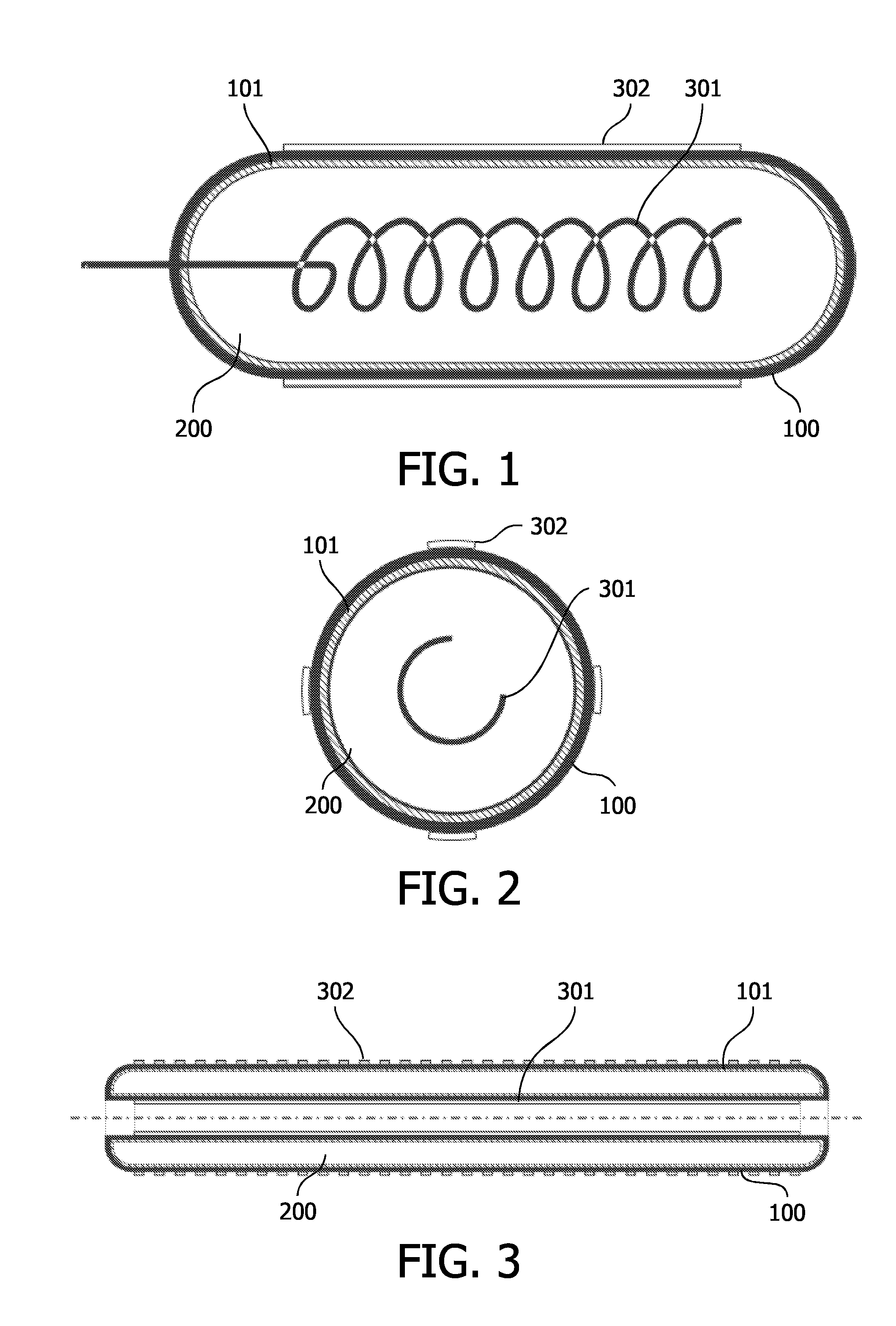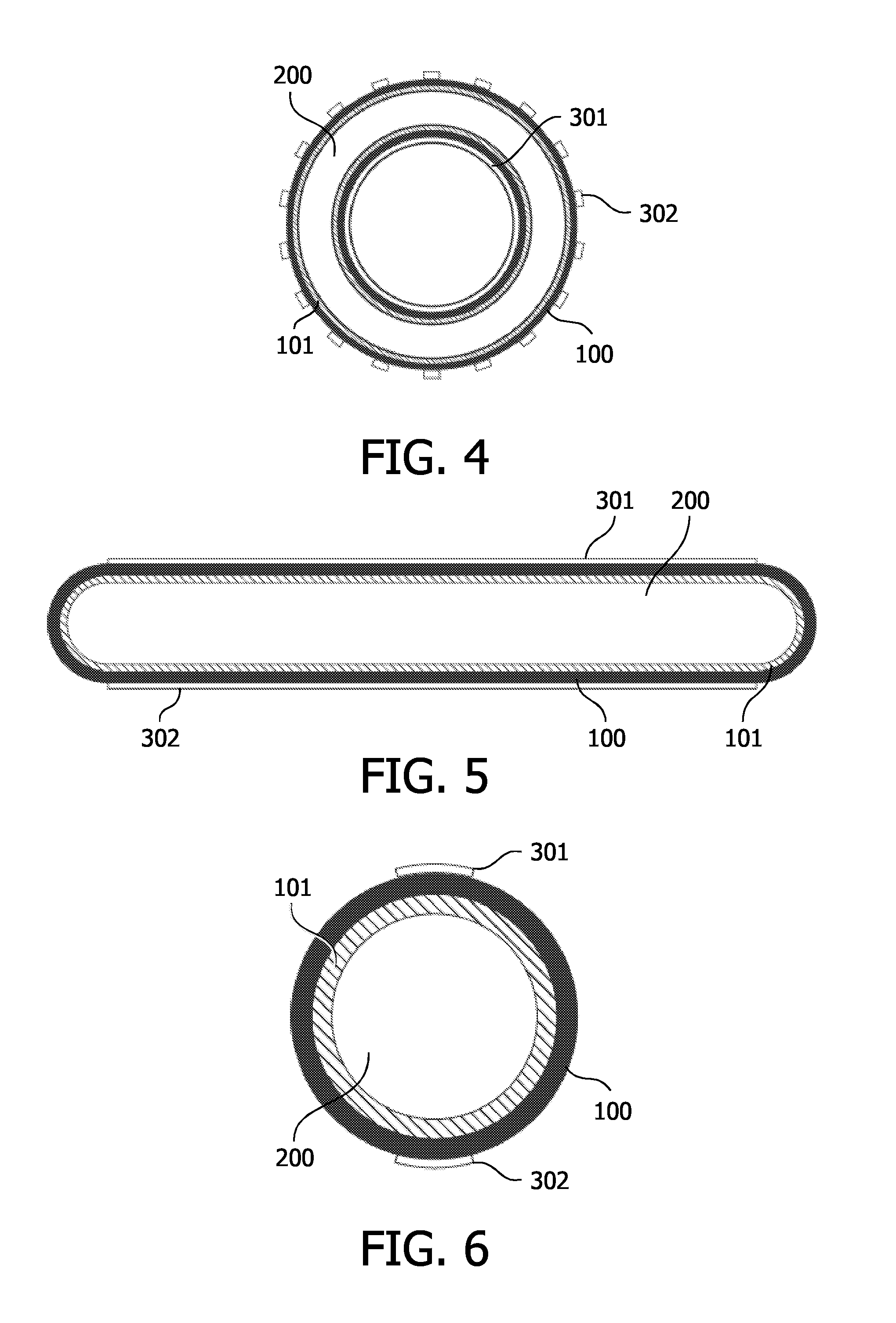Device for Generating Uvc Radiation
a technology of electromagnetic radiation and device, which is applied in the direction of discharge tube/lamp details, discharge tube luminescnet screens, gas-filled discharge tubes, etc., can solve the problems of unsatisfactory optimal efficiency achieved in germicidal applications, such as the sterilization of microorganisms, the disinfection and purification of fluids and surfaces, etc., and achieve good absorption and high emission quantum yield
- Summary
- Abstract
- Description
- Claims
- Application Information
AI Technical Summary
Benefits of technology
Problems solved by technology
Method used
Image
Examples
specific embodiment 1
[0086]Synthesis of (Y0.945Sc0.05)PO4:Bi0.005
[0087]20 g Y2O3, 0.64463 g Sc2O3 and 0.2184 g Bi2O3 are made into a water-based suspension. Slowly 22.692 g H3PO4 (85%) are added and the mixture is stirred for 24 h at room temperature. The solvent is removed using a rotary evaporator and the solid remains are dried at 100° C. 0.400 g LiF are added while grinding the powder in a mortar. Calcination is carried out using the following heating profile: heat up to 800° C. in 2 h, hold for 2 h, heat up to 1000° C. in 2 h, hold for 2 h and finally cool down to room temperature in 4 h. The resulting product is ground again using an agate mortar. Thereafter it is washed for 6 h at 60° C. using a solution of 140 ml HNO3 in 600 ml water. The powder is isolated by suction filtration, washed with water to remove the acid and dried at 100° C. The phosphor is then milled and after milling it is calcined again in air for 2 h at 900° C. in an open crucible. To remove excess bismuth from the particle sur...
specific embodiment 2
[0090]Synthesis of (Y0.795Sc0.2)PO4:Bi0.005
[0091]17,952 g Y2O3, 2.7582 g Sc2O3 and 0.233 g Bi2O3 are made into a water-based suspension. Slowly 24.212 g H3PO4 (85%) are added and the mixture is stirred for 24 h at room temperature. The solvent is removed using a rotary evaporator and the solid remains are dried at 100° C. 0.400 g LiF are added while grinding the powder in a mortar. Calcination is carried out using the following heating profile: heat up to 800° C. in 2 h, hold for 2 h, heat up to 1000° C. in 2 h, hold for 2 h and finally cool down to room temperature in 4 h. The resulting product is ground again using an agate mortar. Thereafter it is washed for 6 h at 60° C. using a solution of 140 ml HNO3 in 600 ml water. The powder is isolated by suction filtration, washed with water to remove the acid and dried at 100° C. The phosphor is then milled and after milling it is calcined again in air for 2 h at 900° C. in an open crucible. To remove excess bismuth from the particle su...
PUM
 Login to View More
Login to View More Abstract
Description
Claims
Application Information
 Login to View More
Login to View More - R&D
- Intellectual Property
- Life Sciences
- Materials
- Tech Scout
- Unparalleled Data Quality
- Higher Quality Content
- 60% Fewer Hallucinations
Browse by: Latest US Patents, China's latest patents, Technical Efficacy Thesaurus, Application Domain, Technology Topic, Popular Technical Reports.
© 2025 PatSnap. All rights reserved.Legal|Privacy policy|Modern Slavery Act Transparency Statement|Sitemap|About US| Contact US: help@patsnap.com



